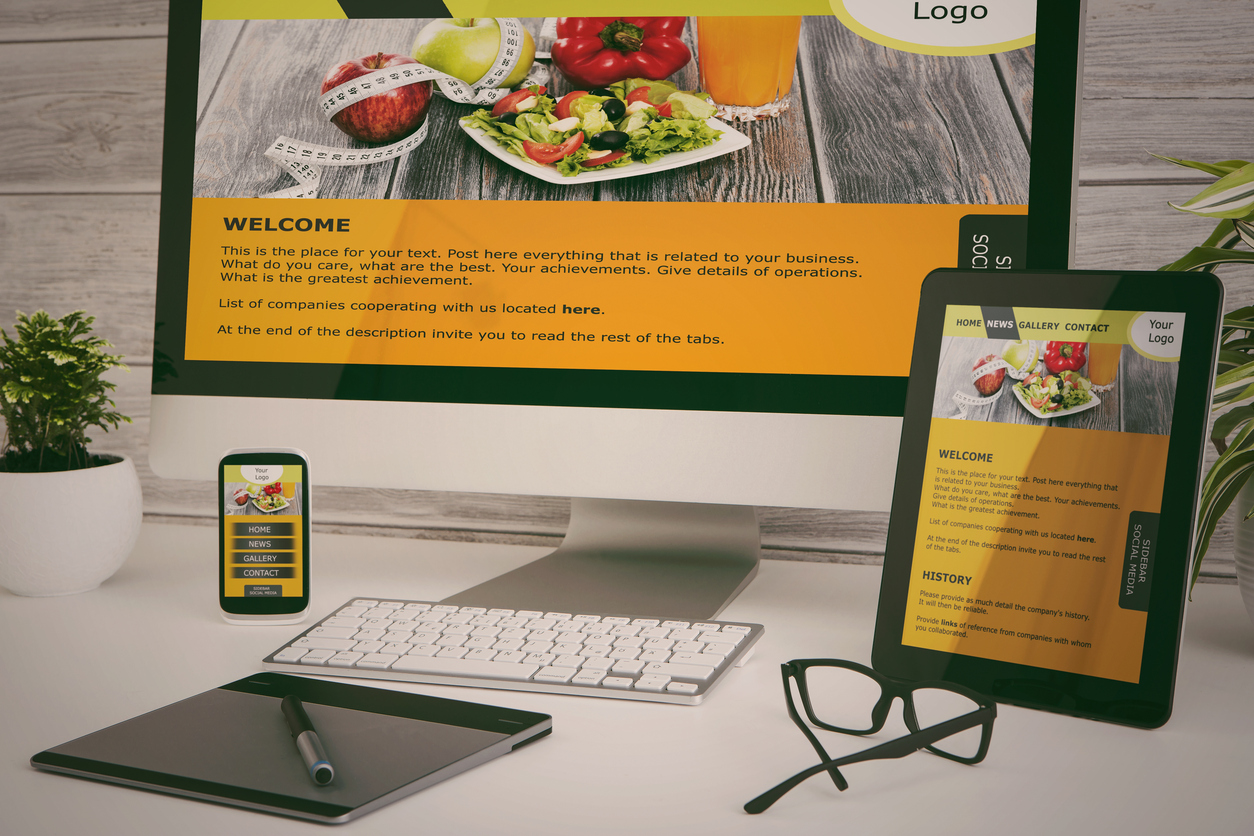What is the point of a website? Depending on who you ask you will get a plethora of answers. Some websites are designed to help you show up in google, others are there for credibility purposes, some are to sell products and services directly from the website. No matter what your answer is, in the end, they all come down to one thing. Selling! The world runs on the all mighty dollar, and the ability to sell is critical to all efforts of your business.
That being said there are tons of different design trends year after year, and keeping up on them can be exhausting. There are 7 time-tested methods to sell services online via your small business website.
Sell Services Online? Try These Website Design Tips
Have Your Contact Form or Opt-in Above the Fold
Above the fold is the top half of your website. It is the first area people see. The majority of your website visitors will look at this area and make a decision to stay or leave. That is why it is critical that your contact form or opt-in is above the fold. It will get exposed to the majority of your website traffic.
Clear Big Picture Selling Service
We are visual creatures and 90 percent of all information is communicated through our eyes. We instinctively trust things we can imagine or see, even if the information isn’t 100 percent true or accurate. We want to believe that the mechanic in grease overalls does a better job fixing our car than the one in the clean overalls. We believe he got into the nitty gritty and fixed our car, but the amount of grease on his overalls has little to do with his competence.
Having a clear high-resolution picture at the top of your website allows potential customers to start imagining what success looks like. Service like life coaching, have a plethora of photos activates your customers desire to do.
Fresh Looking Design
A fresh looking design simply means not having a dated site. If I look at your website and I can tell that it is out of date, you lost my trust. Why would I go to an accountant that has a website from the 1990’s? Is your knowledge of the tax laws dated to the 1990’s also?
Your website is the physical equivalent of what you are wearing right now. Are you suited up in a stylish blazer and rocking kicks, or are you in sweatpants with 3‑day old spaghetti stains on them?
Social Handles Clearly Prevalent with Following and Activity
When I check out your website I am looking for two things. The first is all the reasons I should trust you, the second is all the reasons I shouldn’t trust you. It is my responsibility as a consumer to make the best choice for me, therefore I want to rule you out as a potential option.
Your responsibility is to make the decision easy for me. Having your social me handles clearly present on your site allows me to trust you more. When I click over to your Facebook, Twitter, Instagram, or Pinterest page I want to see activity.
I want to see you posting regularly, engaging with customers, answering customer support. If you do all those things, then I know I have an easy point of contact if I need it. I know there is a human behind the business that I can speak too.
Social Proof
My father who is a long time entrepreneur gave me a little piece of advice, 99.99 percent of people do not want to be invoice #1. People want to know that you have done this before and you are an expert. On your website, you want to show people that they made the right decision.
There are tons of ways to show social proof. Just to name a few examples of social proof.
• Blog article social shares
• Join the 43,683 other entrepreneurs on our mailing list
• 1473 reviews on yelp with a 4.4‑star rating
• Testimonials
Testimonials Clearly Visible
Testimonials are a form of social proof but they deserve a category all on their own.
Your customers are not afraid to spend money. If they are hitting your website there is a high chance they actually want to purchase. What they are afraid of though is “wasting” their money. Customers don’t want to experience poor service, poor quality, or a poor experience. That is why having testimonials of your product or service is an excellent way to alleviate their fears.
A customer wants to know that you have had clients just like them and know how to handle the problems. Even though you and I both know that 99 percent of all clients problems are the same, they think their situation is special.
I can’t tell you the number of times people asked me as a social media expert “I see you have great results in X industry but have you ever handled Y industry it is different after all.”
I find this funny because Y industry is no different than x industry, it involves people knowing, liking and trusting you. But you have to alleviate that fear.
Locations
Google is the king of the Internet and sets the laws of the land. One of Google’s laws is the law of relevance. Google wants to show the best most relevant website to the person making the search. The more they can do this, the more money they make.
When you type “plumber near me” into Google it will show ever plumber who operates near your current location.
If I live in LA, I don’t want a plumber who operates exclusively in Tallahassee to show up in my results.
Having your areas of operation will help you maximize the traffic you generate to those particular locations.
Additionally having those locations on other sites like Google +, Yelp, Trip advisor, and social medias helps too.
All in all, these 7 time-tested website trends will help you sell your service based business. Did I miss any, leave your design trend in the comments below.










